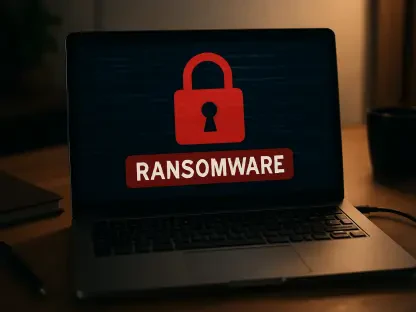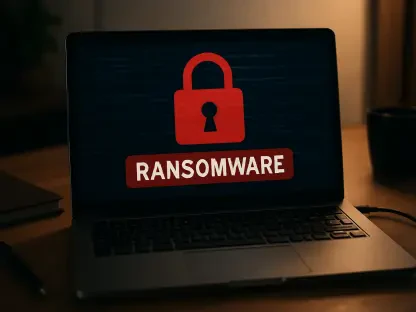In 2025, over 78% of organizations reported at least one security breach directly tied to remote work. A significant portion of the global workforce operates from home offices, coffee shops, and airports, which means protective measures need to be more adaptable. For decades, securing your business meant building walls: firewalls, VPNs, access checkpoints. But in a world of hybrid work and mobile teams, those defenses crumble. Read on to explore how organizations can ensure security in today’s distributed workforce.
Rethinking Security for a Borderless World
The old security model relies on a false sense of control, rooted in the principle: “trust but verify.” Once inside the network, users often have broad access to sensitive information. A distributed workforce stretches the attack surface far beyond company walls, making every endpoint a potential entry point for attackers. The result? A vulnerable interior where a single breach could cascade into a full-scale compromise. In today’s business environment, the trust approach is no longer viable.
That’s where Zero Trust comes in to turn this outdated model on its head. Based on the principle of “never trust, always verify,” it eliminates assumptions and enforces real-time access decisions. Identity, device health, and user context are continuously evaluated on a strictly least-privileged, need-to-know basis before any access is granted.
The result is actionable containment. Threats are isolated before they spread, and access is no longer a one-time deal; it’s an ongoing trust process. For businesses, the benefits are:
Stronger protection across dynamic work environments.
Reduced breach exposure through granular access control.
Improved compliance with modern risk and privacy expectations.
Essentially, Zero Trust is more than a technical pivot. It’s a strategic upgrade for securing modern business.
The Pillars of Modern Remote Security
Protecting a hybrid workforce is about rethinking the foundation of enterprise security. Embracing a Zero Trust, data-centric mindset requires a cohesive strategy built on three essential pillars: integrated technology, adaptive protection, and a culture of shared responsibility.
A Unified Technology Stack
Managing fragmented tools only leads to complexity, blind spots, and gaps in enforcement. A modern approach consolidates protection into a cloud-native, unified security stack that delivers consistent controls wherever users are.
The key components of a unified tech stack include:
Secure access service edge: This architecture combines networking and security into a single, cloud-delivered service. It eliminates clunky systems and ensures seamless, direct, and secure access to apps, enforcing policies uniformly across locations.
Endpoint detection and response: As endpoints multiply, so do risk vectors. Endpoint detection and response tools continuously monitor laptops, phones, and tablets to detect, investigate, and stop threats before they escalate.
Cloud access security broker: With critical data residing in SaaS applications, a Cloud Access Security Broker acts as a gatekeeper, enforcing security policies, preventing data leakage, and ensuring compliance across all cloud services.
A consolidated tech stack enables business simplification, improved visibility, and stronger, consistent protection without user friction. But it is only one of the three pillars for remote security.
Dynamic, Context-Aware Policies
Adaptive security is the second pillar. Static security policies are no match for a dynamic work environment. Today’s defenses must enable access decisions that adjust in real time based on who is requesting access, what device they are using, where they are, and for what data.
Dynamic, context-aware policies should assess signals before granting access, including:
User identity: Is the user who they claim to be? This requires multi-factor authentication as a baseline.
Device health: Is the device patched, free of malware, and compliant with security standards? A personal laptop running an outdated OS should not have the same level of access as a corporate-managed device.
Location: Is the user logging in from a known location or an unusual one? A sudden login from a different continent should trigger additional verification steps.
Data sensitivity: Do access policies align with the nature of the data? Access to non-sensitive public materials should have lower barriers than access to financial records or intellectual property.
By ensuring adaptive security policies, organizations can lower risk exposure and align access with contextual trust, not static assumptions.
A Resilient Security Culture
Poor security habits can still undermine the strongest systems. With human error accounting for up to 95% of breaches, organizations must evolve from one-time training to building a security-aware culture grounded in a real-world context.
For one global consulting firm, this shift produced measurable results. Suppose the company replaces generic phishing tests with role-specific simulations that mirror the actual threats its consultants face. For example, finance teams received simulations disguised as urgent wire transfer requests, while sales teams are targeted with fake prospect inquiries containing malicious links.
A security culture reduces employee clicks on malicious links and cuts incident response times, turning a potential weakness into a strong defense. After some time, this targeted approach keeps teams alert, prepared, and accountable, turning a liability into a strategic layer of defense.
Measuring Success Beyond Compliance
Security today is not just about passing audits; it’s about protecting business continuity. In a remote-first world, where threats move fast and unpredictably, organizations must shift their focus from checkbox compliance to metrics that reflect true resilience.
Modern security leaders are redefining success with KPIs that track how well their teams anticipate, respond to, and recover from attacks, not just avoid penalties. The key metrics for modern resilience include:
Average detection time: How quickly does the security team identify a potential threat? A lower time shortens the attack window, minimizing damage and exposure.
Average response time: Once a threat is detected, how quickly can teams contain and neutralize it? This KPI directly reflects operational readiness and agility under pressure.
Breach cost avoidance: Model what a successful attack would cost, then measure how effective your controls are at preventing it. With the average cost of a data breach now exceeding $4.45 million, this KPI makes a case for ongoing investment.
Your Short, 90-Day Security Plan
Securing a distributed workforce isn’t just about tech; it’s about momentum, visibility, and leadership. This 90-day guide offers a sharp, results-driven path to modernize your security and build lasting resilience.
First 30 Days: Identify critical data assets and where they are sorted. Map remote access points and risk levels. Run a gap analysis against Secure Access Service Edge or Zero Trust frameworks.
Next 60 Days: Enforce mandatory multi-factor authentication across all applications. Deploy an Endpoint Detection and Response solution to your highest-risk user groups. Launch a pilot program for a context-aware access policy for one critical application.
Next 90 Days: Expand successful pilots across the organization. Launch targeted security awareness training based on departmental risk profiles. Establish and report on your new resilience KPIs to demonstrate progress and secure executive buy-in for the next phase.
By applying this phased-out approach, organizations can turn strategy into action. With clear priorities and early wins, you build a foundation for long-term resilience and executive confidence.
Conclusion
The perimeter may be gone, but your control doesn’t have to be. Today’s hybrid workforce demands security that’s as mobile, dynamic, and adaptable as the people it protects. This means moving beyond outdated defenses and embracing a strategy built on Zero Trust, data-centric protection, and real-time adaptability.
It’s time for bold security leadership. Every step you take toward securing your distributed workforce strengthens business continuity, builds executive trust, and reduces operational risk. Your workforce has evolved, so your security strategy must evolve with it.









